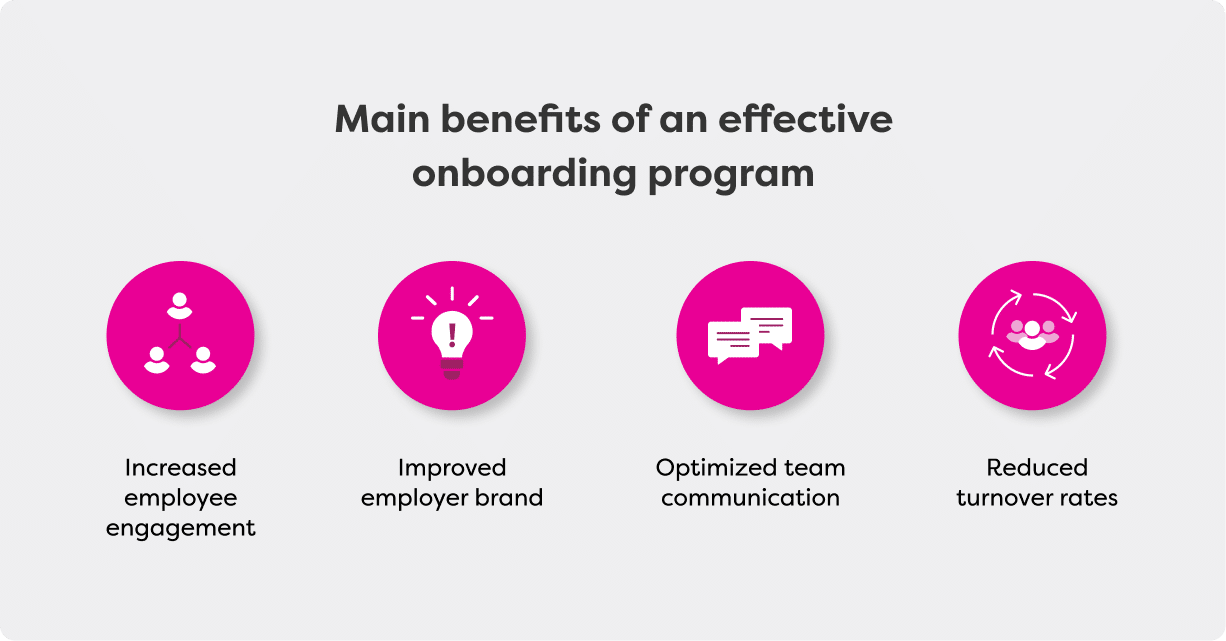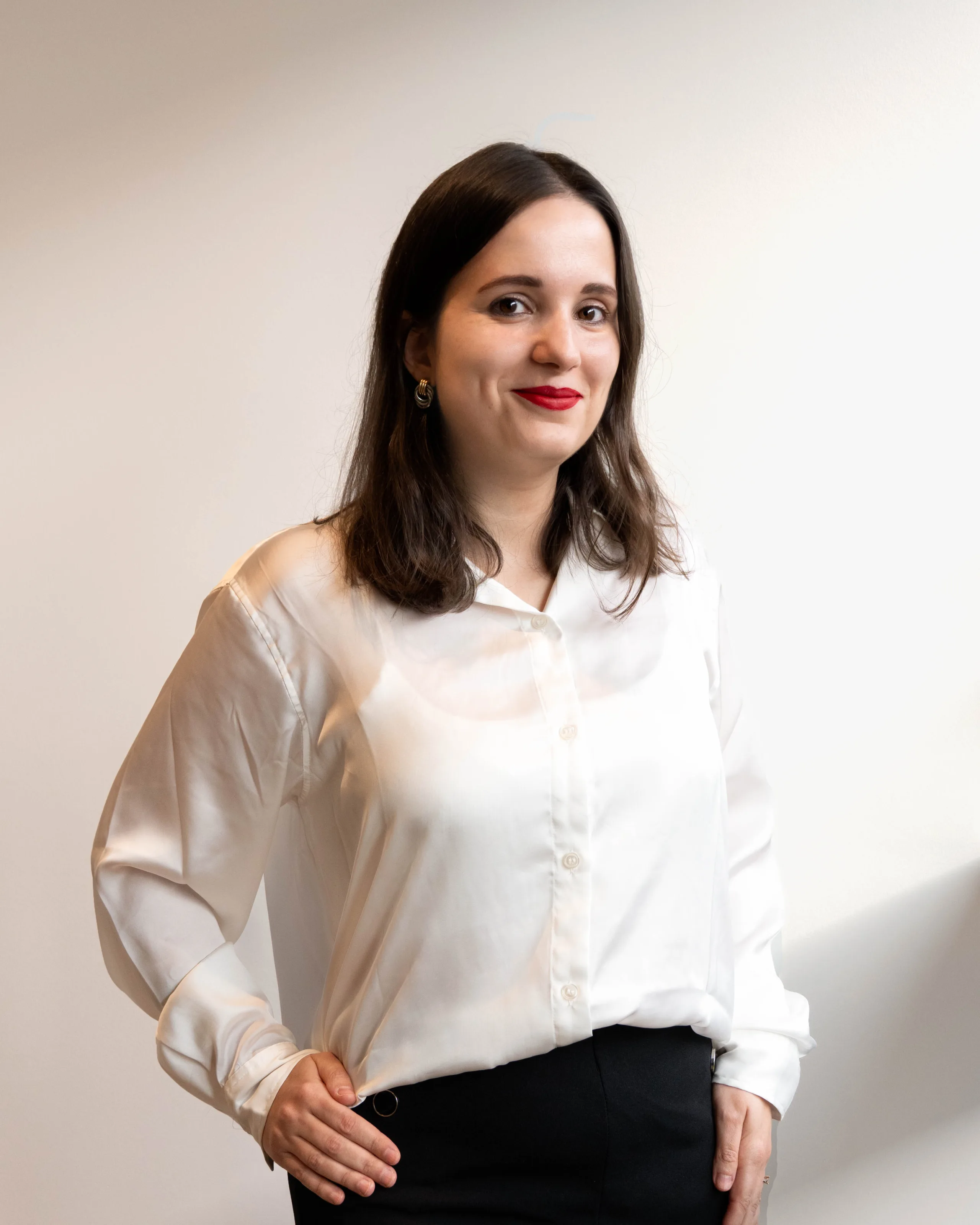If there is one thing we love, it’s talking about the many aspects of onboarding new employees and how this process can guide your entire HR management. So we thought it was time to gather all our knowledge in one article to share the perfect onboarding recipe with you!
As a reminder, employee onboarding is made up of processes designed to help new employees adapt to their new working environment.
When properly executed, these processes have many benefits. They reduce employee turnover, speed up skills acquisition, and ensure better team cohesion. Employee onboarding statistics highlight the importance of successful onboarding programs.
Without further ado, here are 8 easy steps you need to follow to create a memorable onboarding experience in your company.

Step 1: Prepare Your Onboarding Documents
While onboarding often requires strategic and creative thinking, administrative steps are simply inevitable. You should be prepared and anticipate all the paperwork you need to clear before the new hire’s first day in your company. Anticipation will prevent mishaps and delays that could negatively impact the new employee’s first impression.
Here are examples of onboarding documents you need to obtain from, or share with your new hire:
- The employment contract with a job description, details on salary and benefits, employee and employer responsibilities, employment duration, etc;
- Employee identification documents, insurance number, information for tax forms, and work permit if needed;
- Emergency contact and mailing information;
- Direct deposit forms;
- Training certificates and background checks;
- Signed non-disclosure agreements;
- Company policies;
- Organizational chart;
- Employee handbook.
Depending on the industry or company you are working for, you might also want to check if you need company or industry-specific documents.
Step 2: Build Your Seamless Onboarding Plan
While having a go-to onboarding plan template you can use whenever you want can be helpful and save you a lot of time, adaptability is key here. Your formal onboarding program should be adapted to various factors:
- The new hire’s position and regular tasks;
- Their training needs, that you can evaluate before and during the first days;
- Their working context (remote or hybrid worker, part-time worker…);
- Their personal situation (work-life balance, health issues…).
The key here is adaptability and flexibility. Consider the individual needs and situation of each employee and be ready to tweak your onboarding workflow if needed.
If we said it once, we said it a hundred times: first impressions are crucial, and a proper onboarding process takes time. Rushing through the process would result in wasted resources, lack of productivity and eventual employee turnover. Therefore, your onboarding plan should unfold over the course of 3 months and focus on proper training and in-depth introduction to company culture.
Step 3: Make a Good First Impression
The day has finally come: your employee is ready to start their new job. If you’re feeling a little on edge, think about how nervous they probably are! It is time to make them feel comfortable in their new company and start your professional relationship on the right foot.
Here are 6 tips to ensure that you build a trusting connection from the start:

Inform and Listen
Of course, you need to be a trustworthy guide and share useful information throughout the entire process. However, your role will also require you to be on the lookout for potential issues and be ready to help. Being an active listener and having good communication skills is key here.
Use Onboarding Emails
Effective communication should be set up from the employment contract signature, and informative emails are the best way to ensure that the new hire is ready for the big day. Onboarding emails should also be sent to the entire team so that everyone can warmly welcome their new coworker.
Diversify Onboarding Material
Training for a new position can be energy-consuming. On top of training material, leave time for the employee to watch videos presenting the company values, to read more informal material, and to be presented to their teammates. While administrative steps can be tiresome, you can still ensure that other aspects of the onboarding process are more stimulating.
Promote Team Spirit
Team meetings and informal discussions with colleagues should be set up from day one. It is essential that the employee gets to know who they will be working with and build meaningful connections. Communication between managers and new employees also needs to be transparent: using examples of onboarding phrases might help you in that regard.
Present Company Values
The onboarding period is the best time to promote your company culture. Remember to use short introduction videos to present your company mission and values, to gift goodies with the company’s logo, and to highlight organizational perks and benefits.
Find Balance
Onboarding is all about the balance between role-specific training and supervision and employee orientation and autonomy. You should be a guide, not a commander, and let the employee breathe and find their footing. At the same time, be ready to step up anytime your help and guidance is needed, and evaluate employee performance from the get-go.

Step 4: Complete the Crucial Steps
Now that the new hire is duly introduced to the entire company, the core of the onboarding process can start in full. Although onboarding plans differ from one employee to another, here are the essential onboarding process steps you should set up:
- Hire orientation: During this phase, you should take ample time to introduce the newcomer to their work environment, their coworkers, the company structure and their future role. This is the best time to highlight your company and team culture, build trust and answer questions.
- Job training: Now that the employee has found their marks, it is time to learn the ropes of the new job. Establishing a clear training plan is essential to ensure long-term success. Once again, leave the worker enough time to learn and try to evaluate their individual training needs to fill all the potential gaps.
- Transition stage: Your employee is now slowly moving to their permanent role. This phase is dedicated to defining key job responsibilities and setting performance expectations to prepare for the probationary evaluation. Another important aspect here is employee recognition: take time to appreciate the worker’s efforts and their contribution to the company to offer a positive employee experience.
- Ongoing training sessions and development: Training does not stop at onboarding and your teams should feel like they can grow in your company. Ongoing training and development opportunities are key to improving your employer brand and employee retention rates, and standing out in the job market.
Now, it is time to spice things up with original ideas to create an engaging onboarding experience!
Step 5: Spice it Up With Original Onboarding Ideas
Finding creative ways to spice up your onboarding processes is not always easy. Here are some inspirational tips to help you:
- Create an onboarding newsletter with a photograph, a list of hobbies, and fun bits of trivia presenting the new hire;
- Set up a mentoring program to make sure that the new employee has a dedicated coworker to rely on;
- Organize a scavenger hunt encouraging informal communication, that can only be solved by asking questions to team mates;
- Decorate the new employee’s desk with company goodies and office supplies. If the newcomer works remotely, you can send goodies their way with a nice little note.
Step 6: Perfect Your Recipe with Efficient Remote Onboarding Practices
Remote onboarding is bound to become an increasingly common practice. If you are managing remote employees, do not fret: our previous tips can be applied to every context. However, there are a few aspects that should be considered when onboarding remotely:
- Build Effective Communication: Remote isolation should never become an issue in your company. Building effective communication and key relationships increases employee engagement, ensures that everyone is on the same page, and maintains team spirit even from a distance. So treat remote employees with the same care and attention you provide office workers.
- Use the Right Company Tools: Remote work implies digitizing your processes to help the worker accomplish their goals. Therefore, business digital transformation should definitely be one of your priorities. Furthermore, expanding the use of appropriate technology and platforms throughout your entire organization will streamline your workflow and increase efficiency.
- Organize Remote Team-Building Activities: Involving the entire team in the onboarding process remains a priority, especially in remote contexts. Make sure that everyone is on board and adapt usual team meetings and activities to the remote worker’s context.
Managing remote workers calls for the upscaling of all of your processes. Keep on reading to find out how you can easily modernize your practices!

Step 7: Go Above and Beyond and Modernize Your Onboarding Processes
We have already mentioned the importance of flexibility and adaptability for an effective onboarding process. These qualities are also crucial in your process optimization strategy. Being a modern employer or manager means offering organizational flexibility in all its forms.
You might be thinking that it is easier said than done. Fortunately, technology can support your HR transformation efforts and help you gain flexibility in all aspects of your worker management practices. Investing in human resources software solutions will optimize all your processes, including your onboarding programs!
Step 8: Continuously Improve Your Practices
Of course, as with all human resources management practices, onboarding processes need to be continuously improved according to your business goals and your employee’s expectations.
This is where employee feedback comes into play: by collecting your newly hired employees’ comments and feelings, you will better evaluate their satisfaction and optimize your processes accordingly. Employee surveys are the best way to ensure efficient feedback collection while ensuring confidentiality, so we recommend that you implement them in your company to drastically improve employee experience in your company.
To Conclude
Here are some telling examples to keep in mind:
- The average cost of onboarding is $4000.
- The first 45 days of employment account for 25% of employee turnover.
- 28% of hires leave their jobs after 6 months.
- Managers are 20% more satisfied with employees who have received formal onboarding training.
Creating the perfect employee onboarding recipe takes dedication and energy. With the support of an effective employee onboarding software covering administrative tasks, you will save precious time and improve employee experience from the get-go.
Of course, don’t forget your free onboarding checklist for a successful onboarding process!
Create a positive employee onboarding experience with affordable tools:
Folks HR is the best all-in-one platform for SMBs!

